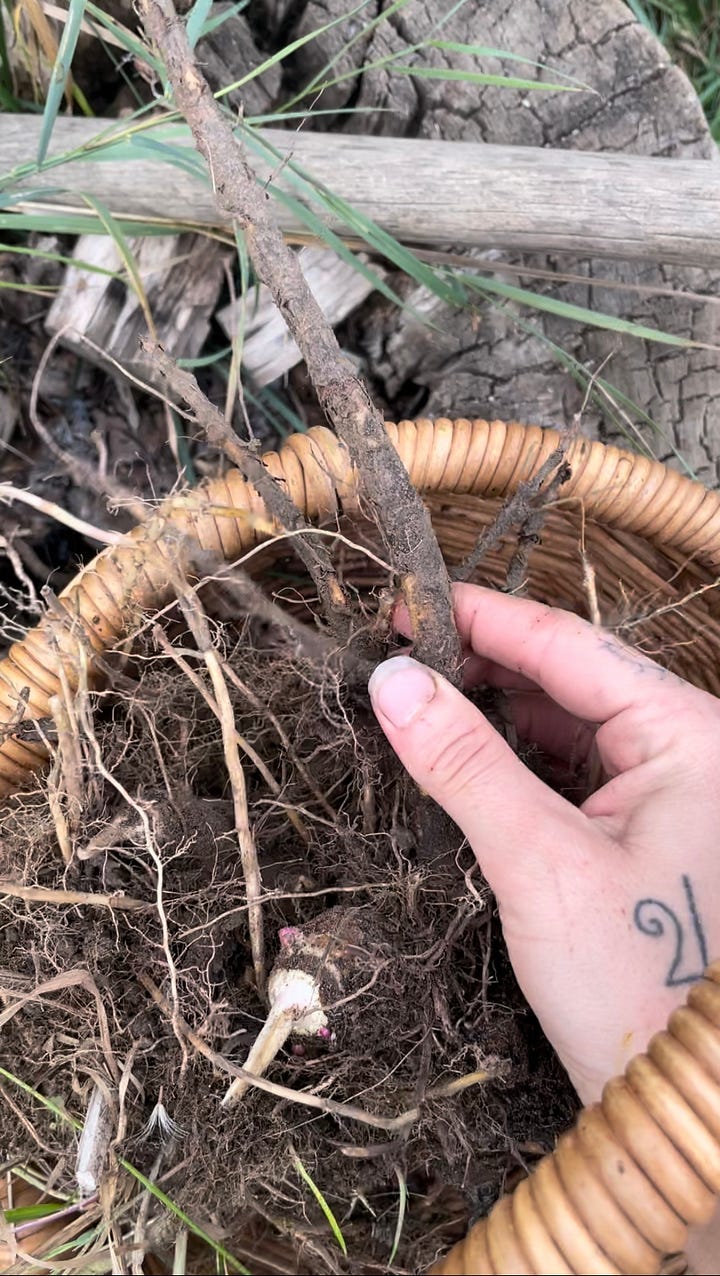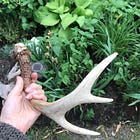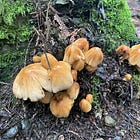It is an autumn ritual for many gardeners to go out and chop down all the stalks that have wilted away, clear the beds and rake the leaves. Create a clean and bare canvas to start fresh again in the spring. In this style of gardening the main focus is the human and their needs. They grow their crops, get their food, then scrap it all and start again. Maximize space and efficiency, maximize yield. This looks like rows and rows of bare soil planted with the same plant again and again. Although this may appear to be an easy and effective method, it does not serve the greater environment that we are a part of. In many ways, it becomes a barren landscape, a monoculture desert.
When we consider the garden that we are working on as a living biome, our actions are called into question. We are asked to consider not just ourselves but the well-being of the other inhabitants of such an ecosystem. We are asked to consider the health of the soil. We are asked to consider what resources are unnecessarily leaching out of this garden circle. We are asked to consider whether we are feeding the space or depleting it. When it comes to overwintering our garden with this new perspective, the plants that we were so ready to rip out of the ground and throw into garbage or compost piles come forward to serve a purpose. The leaves that we are told to rake up and put away reveal themselves are valuable just where they are. There is so much to say about leaving a good thing well alone when we as a species have a tendency to insert ourselves into every process. When we hold an ecological gardening perspective, however, when we step back and see our garden space as a living ecosystem alive and thriving without our input, we see better how we may serve the space. We no longer are the director, but the directed. We no longer are dictator, but co-creator. We see how the land has an innate desire to tend to itself in far more complex and intricate ways than we understand. It is easy to jump in and dismantle an ancient process that we don't understand. Yet this also dismantles a web of relating that is designed to serve the health of a biome. When we remove ourselves from the center and instead step into the circle together with our relatives, we start to truly show up in service. Those brown, wilted stalks now become homes for overwintering bugs and food for the birds. Those leaves become rich compost for the soil, and a nursery for young critters to stay warm. We see those annual flowers we planted drop their seeds and take root for another generation of growth. We see how we can collect our seeds directly from our garden rather than depend on a seed market- which is a big recalibration of the way we garden. Left alone, life congregates life. Life nourishes life. Life will naturally move towards restoration. When we take our role as gardeners as stewards of the land, we facilitate a deeper complexity that may be woven into the spaces that we tend to. Life seeps into empty spaces, fills forgotten niches, and grows more whole.
When we step aside we see how well the land can take care of itself. And when we become caretakers of such spaces instead of chiefs, we have an opportunity to create an oasis of diversity and life. I spoke of the blessing of ecological gardening in a previous post, yet this time of year as people are closing their beds for the winters and the land rests after a productive season, I am reminded of how much humans desire cleanliness, order and control. At least we have been trained to do so. The idea of leaves being left on the ground is appalling to some. The thought of looking out the window and seeing those ugly, dead stalks of what once was alive is unnerving. Folks would much rather just clean it all up, and scrap it bare for when they are ready to use it again. As though its only purpose is to serve us. It is disassociating with the autumnal death that brings chaos and unravelling to a world trying to maintain order. But alas, the leaves will fall anyway, the plants will wilt, the creatures will rest. Let yourself be a nurturer of habitat, a pioneer of life. In such a world where habitat is becoming more and more scarce, especially in urban environments, let the space you weave be a haven for our forgotten relatives. Let it be an animated wellspring for all the wild things. Including ourselves.


more reads here:










I’m extremely interested in this topic, I have a little garden…mostly lemon balm and holy basil and some culinary herbs. The lemon balm had its third cycle in the same spot and I’m wondering if I should turn the soil over and give that spot some rest. Was also thinking about doing a cover crop which would of course require clearing things out. Now you’ve got me thinking about just leaving everything be.
Do you have any books or other sources that can help me decide? I’ll ask the land itself too…